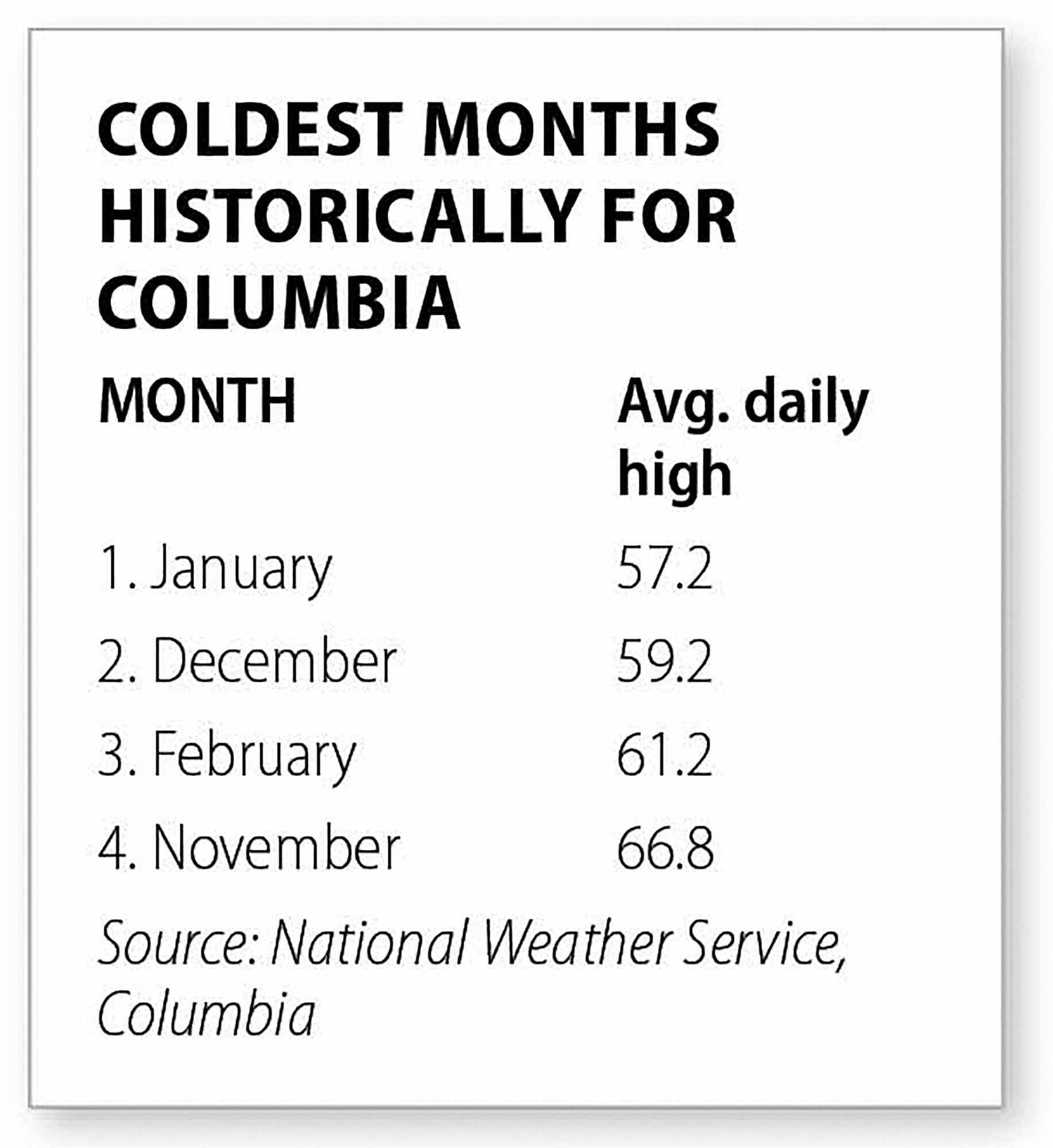Why are our winters generally so mild? Meteorologist explains
COLDEST MONTHS HISTORICALLY FOR COLUMBIA
MONTH, Avg. daily high
1. January, 57.2
2. December, 59.2
3. February, 61.2
4. November, 66.8
Source: National Weather Service, Columbia
bruce@theitem.com
Well, August is behind us, and fall is here in Sumter and the Midlands.
August was certainly not the "beast" with heat that it often is here with an average daily high temperature of 89.7 degrees for the 31 days on the calendar, according to the National Weather Service.
Now come cooler days as a general rule for the greater Columbia area.
Ever wonder what are the coldest months of the year for Columbia and the Midlands?
Based on a rolling 30-year average since 1991, it is January with an average daily high temperature of a "balmy" 57.2 degrees, according to the weather service. The next coldest months on the calendar are December (59.2 degrees), February (61.2 degrees) and November (66.8).
For last winter, January again was the coldest month with an average daily high of 58.0 degrees, National Weather Service Meteorologist Chris Landolfi said.
For the last five years, January 2022 was the coldest month, registering an average daily high of 55.3 degrees.
Landolfi also explained why winter temperatures often stay so mild in our region.
First is our lower latitude in the deep South, and the sun angle is higher in the sky than in states to our north. Next, our proximity to the coast tends to moderate our temperatures because the ocean stays relatively warm throughout the winter compared to areas on land, he said.
Another significant factor, according to Landolfi, is the fact that the coldest air generally stays on the western side of the Appalachian Mountains.
"So, you can get some pretty good, cold-air outbreaks into the central U.S. and even into parts of the deep South, but sometimes we stay almost a little more insulated where we are," he said. "Some of that cold air kind of gets blocked by the Appalachians. Obviously, we can get cold-air outbreaks, but it is a little bit more rare for us here in central South Carolina than maybe it is a little further west even on the same latitude line."
Examples of colder states with similar latitudes, but on the western side of the Appalachians, include Tennessee, northern Alabama, Arkansas and Mississippi, Landolfi added.
More Articles to Read




